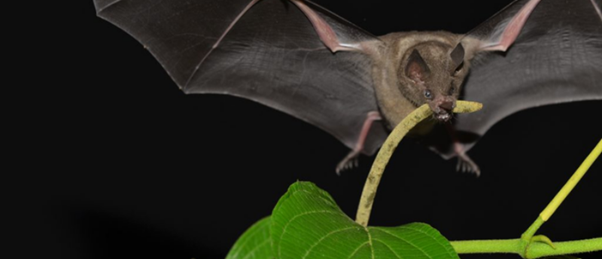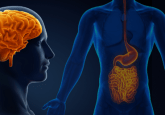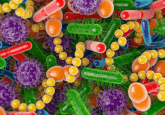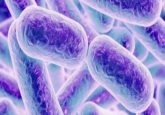What makes fruit so appealing?

A recent review highlights the role of secondary metabolites in plant seed distribution and provides a framework for conceptualizing the impact of different metabolites.
Growing up, there was a cherry tree in my garden. Each summer for a few weeks the fruit on the tree would swell and take on a deep red color, almost glistening as if the ripe juices were beginning to burst through the skin of the succulent cherry. At this point, a frenzied few days would unfold; my family competing with furious wasps, birds and squirrels to collect as many of the fruit as possible to catch them in their prime.
All this took place without much consideration for the masterfully manipulative scheme played out by the cherry tree on the frantic animals fussing around it. By beautifully coordinating the ripening of the fruit with the development of the seeds inside, the tree attracted hundreds of animals to it to disperse as many of its now fully developed seeds as far and wide as possible. But what exactly is it that lured us all in?
The secret is in secondary metabolites
This is exactly the question that a recently published review paper headed up by Susan Whitehead’s lab at Virginia Tech (VA, USA) has set out to answer, highlighting the importance of molecules known as plant secondary metabolites in seed dispersal.
Secondary metabolites are molecules, such as enzymes, tannins and alkaloids, which give fruit their appealing tastes, smells and colors, but can also be responsible for off putting bitterness and other characteristics that may deter animals from eating the fruit. Plants must orchestrate the levels of different secondary metabolites to ensure that their fruits are repellent whilst seeds are developing and then delicious and appealing when they are mature and ready to be distributed.

Who won the 2021 Nobel Prize in Chemistry?
Until the year 2000, chemical reactions could only be catalyzed using metal compounds or enzymes. Then, thanks to the research of Benjamin List and David W. C. MacMillan, this changed.
An acquired taste
Whitehead and her co-author Annika Nelson (Virginia Tech) note that this balancing effect is a serious feat, with some plants displaying highly precise levels of control. The Piper sancti-felicis plants of Costa Rica, for instance, have ensured that their spear-like fruit have the perfect balance of secondary metabolites for the Seba’s short-tailed bat (pictured above) to consume half of the fruit before spitting it back out again, as a result of the off-putting tastes created by a high concentration of secondary metabolites.
At first this seems counter-intuitive; why prevent the bat from distributing the seeds elsewhere? However, once on the forest floor, ants can then pick up the pulp, as Whitehead explains:
“Ants often consume just the fruit pulp and discard the clean seeds right outside their nest. We think this second stage of the seed dispersal process might increase the chance of seed survival.”
Framing the issue
The review features many more insights into the actions of secondary metabolites and provides researchers with a newly created conceptual framework of seed dispersal effectiveness. This framework quantifies the number of new adult plants that are produced by the activities of an animal that disperses the plant’s seeds.
Nelson explains further that: “The Seed Dispersal Effectiveness framework divides seed dispersal into different steps, such as when and how many seeds are first removed or when and where seeds are eventually deposited, that are easier to individually measure. The benefit of this framework is that you can use it to tackle separate pieces of the seed dispersal process and then put them all together in the end to quantify how many seeds an animal is effectively dispersing for a plant.”





